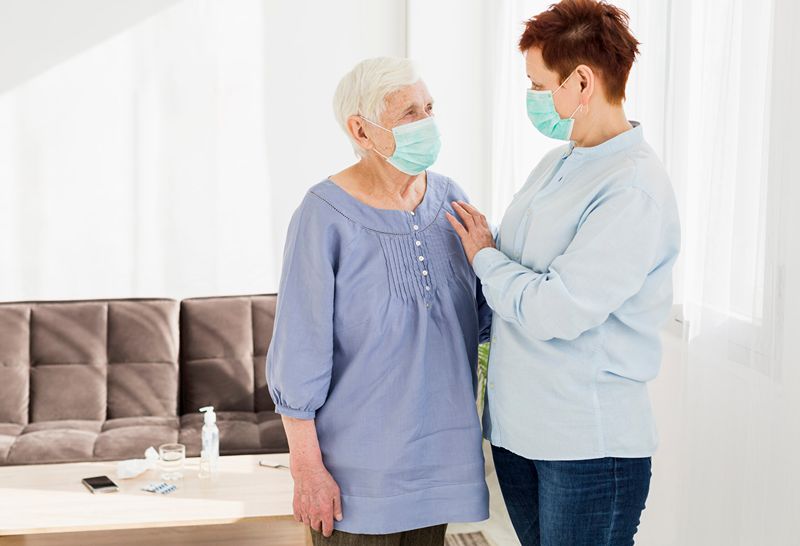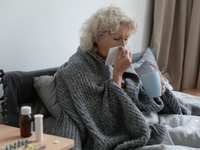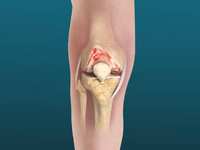- Categories :
- More
Strategies for Cultivating Healthy Habits to Prevent Cervical Cancer

Cervical cancer significantly affects women’s health, contributing to a high mortality rate each year. For many, searching for assisted living near me becomes an important step in finding the right environment to support their health and wellness journey. Adopting a balanced diet and engaging in regular physical activity are essential strategies to reduce the risk of this disease. Additionally, scheduling routine health screenings can catch issues early, enhancing prevention efforts. For those living in assisted living facilities, these healthy habits are crucial for maintaining overall wellness. This article explores practical approaches to cultivating these habits, empowering individuals to lower their cervical cancer risk and improve their quality of life.
Key Takeaways
- unlimited care cottages emphasize balanced diets with fresh produce to support resident health
- structured exercise programs help reduce cervical cancer risk among assisted living residents
- regular health screenings and personalized nutrition plans are essential for early prevention
- stress management and good sleep hygiene enhance overall wellness in senior communities
- health education and community outreach empower residents to proactively prevent cervical cancer
Adopt a Balanced Diet to Reduce Cervical Cancer Risk
Adopting a balanced diet involves incorporating fruits and vegetables, choosing whole grains, and limiting processed foods and sugary beverages. Registered nurses and Medicare support portion control and hydration with healthy alternatives. Unlicensed assistive personnel assist in meal preparation, while the Food and Drug Administration regulates supplements to fill nutritional gaps along Interstate 45.
Incorporate Fruits and Vegetables Into Your Daily Meals
Caregivers at Unlimited Care Cottages prioritize the inclusion of a wide variety of fruits and vegetables in residents’ daily meals to support overall health and minimize cervical cancer risk. By sourcing fresh produce, these communities ensure that their dietary offerings are both nutritious and diverse.
Adhering to state laws and nutritional guidelines, caregivers craft balanced meal plans that emphasize the importance of plant-based foods. This commitment not only enhances the well-being of residents but also aligns with best practices in cancer prevention, providing a safe and healthy environment across all locations.
Choose Whole Grains for Optimal Nutritional Benefits
Incorporating whole grains into daily diets plays a pivotal role in lowering the incidence of cervical cancer among residents. Whole grains, rich in fiber and essential nutrients, contribute to overall health and support the body’s natural defenses against cancer development.
By prioritizing whole grain options, such as brown rice and whole wheat products, residential care providers can enhance meal plans that not only promote wellness but also reduce the potential need for cervical cancer-related surgeries. This proactive approach aligns with business objectives to deliver high-quality, health-focused care to the aging population.
Limit Processed Foods and Sugary Beverages for Health
Independent living communities, limiting processed foods and sugary beverages plays a crucial role in reducing cervical cancer risk among residents. By focusing on activities of daily living related to meal preparation, these facilities ensure that nutritious and wholesome options are consistently available, fostering a healthier lifestyle.
Effective management of assisted living costs allows these communities to provide high-quality food choices and comprehensive health education, including the promotion of safe practices like condom use to prevent HPV transmission. This holistic approach not only supports physical well-being but also enhances the overall quality of life for residents.
Stay Hydrated With Water and Healthy Alternatives
Ensuring residents stay adequately hydrated is vital for reducing cervical cancer risk. Unlimited Care Cottages emphasize regular water intake and offer healthy alternatives like herbal teas and infused water, especially important during the ongoing pandemic where maintaining health has become paramount.
Engaging residents in regular exercise, such as walking on designated trails within the community, not only promotes physical fitness but also supports hydration habits. By encouraging active lifestyles, the facilities help lower health risks and enhance overall well-being among their residents.
Understand Portion Control to Maintain a Healthy Weight
Licensed practical nurses play a crucial role in educating residents about portion control, essential for maintaining a healthy weight and reducing cervical cancer risk. By providing personalized meal plans and ongoing support, healthcare professionals ensure that individuals understand appropriate serving sizes and balanced nutrition.
Within the City of Spring Texas, health care teams at Unlimited Care Cottages implement portion control strategies tailored to each resident’s needs. This approach not only promotes weight management but also enhances overall well-being, contributing to a lower likelihood of developing cervical cancer.
Consider Supplements to Fill Nutritional Gaps
In Southeast Texas, assisted living services often incorporate dietary supplements to ensure residents receive essential nutrients that may be lacking in their regular meals. By collaborating with healthcare professionals, these facilities can identify specific nutritional gaps and recommend appropriate supplements, enhancing overall health and reducing the risk of cervical cancer among their residents.
Independent living facilities in the region regularly consult with ombudsmen to monitor the effectiveness of supplement programs and ensure compliance with regulatory standards. This proactive approach allows for personalized nutrition plans that support the well-being of each individual, providing a comprehensive strategy to prevent cervical cancer through balanced nutrition and targeted supplementation.
Engage in Regular Physical Activity for Better Health
Engaging in regular physical activity involves establishing a consistent weekly exercise routine, combining cardio and strength training. Assisted living communities benefit from taking active breaks during long periods of sitting, finding enjoyable activities to stay motivated, setting realistic fitness goals to track progress, and listening to their bodies to rest when needed. These practices promote health equity within a humid subtropical climate while maintaining assisted living costs and fulfilling care contracts.
Establish a Consistent Exercise Routine Each Week
Assisted living facilities implement structured exercise programs to help residents establish a consistent weekly routine. These programs are often covered by insurance plans, ensuring that residents have access to necessary resources without financial strain. By providing tailored fitness schedules, facilities support the physical health and cancer prevention efforts of their communities.
Assisted living communities collaborate with local health professionals to design exercise routines that meet the specific needs of their residents. This collaboration not only enhances the effectiveness of the fitness programs but also ensures that participants receive expert guidance, fostering a supportive environment for maintaining regular physical activity.
Include Both Cardio and Strength Training Exercises
Including both cardio and strength training exercises in your fitness routine is crucial for enhancing overall health and reducing the risk of cervical cancer. Recent research findings emphasize the importance of incorporating these essential exercises to promote overall well-being. Exercise and fitness tips for seniors, such as low-impact cardio or resistance training, can help individuals stay active and healthy as they age. By tailoring fitness programs to include a mix of cardiovascular and strength-building activities, fitness facilities are aligning with the latest cancer research to offer residents a comprehensive approach to wellness.
Cardiovascular exercises such as running, cycling or swimming help improve heart health, circulation, and overall endurance, while strength training exercises like weightlifting or bodyweight exercises help build and maintain muscle mass. These combined exercises not only contribute to physical health but also aid in maintaining a healthy weight, reducing inflammation, and enhancing immune function. By promoting a balanced approach to fitness, these facilities are empowering individuals to take proactive steps in mitigating their cervical cancer risk and maximizing their overall health and well-being through a holistic approach to exercise and wellness.
Strength training, in particular, plays a crucial role in maintaining bone density and metabolic function, which are key factors in cancer prevention. Facilities like Unlimited Care Cottages integrate strength workouts alongside cardio sessions in their daily schedules, preventing a metaphorical flood of health issues by promoting sustained physical activity. This intentional combination not only supports residents’ physical well-being but also aligns with best practices in cancer research, providing a robust strategy for long-term health maintenance.
Take Active Breaks During Long Hours of Sitting
Active breaks play a crucial role in enhancing the quality of life for residents in care facilities, especially during extended periods of sitting. By incorporating short exercise sessions and movement reminders throughout the day, these facilities are able to disrupt the sedentary lifestyle often associated with residing in such environments. This intentional focus on encouraging residents to engage in physical activity helps mitigate the health risks linked to prolonged inactivity, ultimately contributing to their overall well-being and reducing the risk of cervical cancer. Prioritizing active breaks not only improves physical health but also serves as a vital component in promoting mental clarity, emotional well-being, and a sense of productivity among residents. It encourages movement, which in turn leads to improved circulation, muscle strength, and flexibility, all of which are essential for maintaining a high quality of life and reducing the likelihood of developing health issues associated with prolonged sitting.
Furthermore, by integrating active breaks into the daily routines of residents in care facilities, staff members create a supportive environment that fosters a culture of wellness and vitality. These breaks serve as beneficial opportunities for residents to stretch, move their bodies, and refresh their minds, resulting in increased energy levels and improved cognitive function. The proactive approach to prioritizing physical activity also helps to establish healthy habits and routines that can be sustained in the long term. Ultimately, by empowering residents to take regular active breaks, care facilities not only enhance their residents’ overall quality of life but also contribute to reducing the prevalence of health issues such as cervical cancer linked to sedentary behavior.
Find Activities You Enjoy to Stay Motivated
Choosing physical activities that residents enjoy is essential for maintaining motivation in their wellness routines. For instance, assisted living communities often utilize the Internet to discover local fitness classes or gardening groups, ensuring that activities are both accessible and engaging for residents.
Managing the cost of activities is also a priority, and the Agency for Health Care Administration may provide resources or funding to support affordable leisure options. By incorporating interests such as gardening, communities can offer fulfilling and cost-effective ways for residents to stay active and reduce their risk of cervical cancer.

















